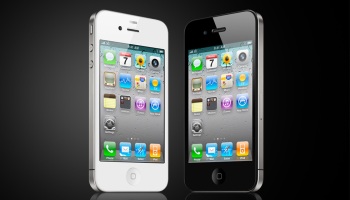Supply Problem May Dent iPhone 4 Sales

Despite the supply problem, Apple is expected to ship 21 million iPhone 4 phones this year – around half the iPhones it will sell
Apple’s iPhone 4 is assured of success, but supply difficulties may push usedrs to go with a competitor, according to an analyst from research firm iSuppli.
The iPhone 4 sold 1.7 million units within three days, and isiSuppli estimates 21.7 million units of the phone will ship in 2010, making 51 percent of total iPhone shipments for the year, so the analyst is not predicting disaster, but cites two problems: the meltdown of Apple’s and AT&T’s ordering systems on the iPhone 4’s first day of presales, and then the pushback of the pre-order shipment date to July 14—as particularly harmful to Apple’s image.
Damage to the brand
 “While the channel supply issue might not impact total iPhone sales for the entire year, what is happening now certainly has done some damage to the Apple brand,” Tina Teng, an analyst with iSuppli, wrote in a June 29 research note. “Consumers, questioning Apple’s supply chain management capability, have started looking for alternative devices. In particular, consumers are not satisfied with Apple’s response to the antenna issue causing poor reception and dropped calls.”
“While the channel supply issue might not impact total iPhone sales for the entire year, what is happening now certainly has done some damage to the Apple brand,” Tina Teng, an analyst with iSuppli, wrote in a June 29 research note. “Consumers, questioning Apple’s supply chain management capability, have started looking for alternative devices. In particular, consumers are not satisfied with Apple’s response to the antenna issue causing poor reception and dropped calls.”
Other smartphone competitors, Teng added, are introducing strong products into the market; specifically, she cites Nokia’s upcoming N8 smartphone, along with the HTC Evo 4G and Samsung Galaxy S, as devices with features capable of competing against the iPhone 4.
“While North American consumers are grappling with the iPhone 4 shortage, consumers—especially those in other regions—know they have other smart phone options,” she wrote in her research note. “With threats coming from every corner of the market, can Apple afford another slip in its supply chain management?”
Nonetheless, iSuppli also predicts success for the iPhone 4, estimating shipments of 21.7 million in 2010, or 51 percent of total iPhone shipments for the year. Apple’s own top-line forecast predicts overall iPhone shipments of 42.6 million units in 2010, followed by 53.5 million units in 2011, lifting to 62.1 million units in 2012, zooming to 70.3 million units in 2013, and then 77.5 million units in 2014.
On 24 June, the iPhone 4’s first day of general release, news outlets from around the world reported epic lines at stores in major cities.
Within hours of the first customers retrieving their devices, however, reports emerged of a technical issue: Touching the device’s metal antenna band, which runs along the outer rim, seemed to reduce certain users’ reception to zero. Limited in-office tests by eWEEK were able to consistently replicate the phenomenon. Tech blogs such as Gizmodo quickly began posting video of users touching the smartphone’s rim and making its onscreen reception bars disappear.
Apple responded to the complaints in short order- and rival Nokia was quick to poke fun at the problem
“Gripping any mobile phone will result in some attenuation of its antenna performance, with certain places being worse than others depending on the placement of the antennas,” Apple wrote in a widely circulated June 25 statement. “If you ever experience this with your iPhone 4, avoid gripping it in the lower left corner in a way that covers both sides of the black strip in the middle band, or simply use one of the many available cases.”
It remains to be seen whether or not the antenna issue, and the media attention focused on it, will eventually have an effect on iPhone 4 sales. In the meantime, though, there are indications that at least some of Apple’s supply issues are continuing; the company indicated in a recent press release that production delays will delay the white-bodied iPhone 4’s availability until the second half of July.